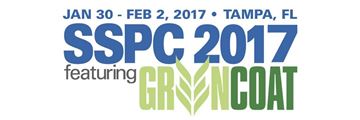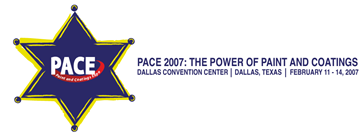Search
Conference Papers
View as
Sort by
Display
per page
The Challenge of Balancing Adhesion and Corrosion Resistance in Waterborne Styrenated Acrylic Direct to Metal (DTM) Resins
Product Number:
51217-034-SG
Publication Date:
2017
$20.00
The Challenges of Replacing Conventional Thermal Insulation with Insulation Coatings to Eliminate Corrosion Under Insulation (CUI)
Product Number:
51323-19519-SG
Publication Date:
2023
$20.00
The Change Of Corrosion Inhibition Behavior Of Tetradecyl Phosphate Ester At Elevated Temperatures
Product Number:
51322-18053-SG
Publication Date:
2022
$20.00
The Color of History: When the Brooklyn Bridge is Your Canvas
Product Number:
41215-937-SG
Publication Date:
2015
$20.00
The Combined Influences of Microstructure, Strength, and Titanium Content on the Hydrogen Stress Cracking Resistance of Precipitation Hardened Nickel Alloys
Product Number:
51323-19348-SG
Publication Date:
2023
$20.00
The Coming of Air Barriers in the National Model Building Codes
Product Number:
41207-391-SG
Publication Date:
2007
$20.00
The Commercialization of Self-Healing Technology in Normal Epoxy Coatings
Product Number:
51315-5790-SG
ISBN:
5790 2015 CP
Publication Date:
2015
$20.00
The Complex Synergy of Delayed Environmentally Assisted Cracking In Transmission Gear Assemblies
Product Number:
51323-19337-SG
Publication Date:
2023
$20.00
The Complexities of SSC testing of SMSS From A Steelmaker’s Perspective
Product Number:
51319-12893-SG
Publication Date:
2019
$20.00
The Complexity And Challenges Of Irradiation-Induced Phase Instability Phenomenon In Nuclear Power Plant Components
Product Number:
ED22-17322-SG
Publication Date:
2022
$20.00
The Contractor’s Logistics and Challenges of Painting Commercial Stores During Operation
Product Number:
41211-621-SG
Publication Date:
2011
$20.00
The Correlation of Appearances of Appearances of Changes and Long term Corrosion Protection for Aromatic Polyurethane Coatings Used on Steel Water Pipes
Product Number:
51220-237-SG
Publication Date:
2020
$20.00














